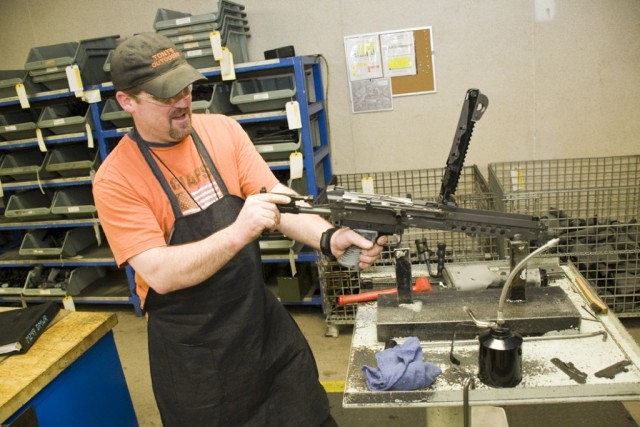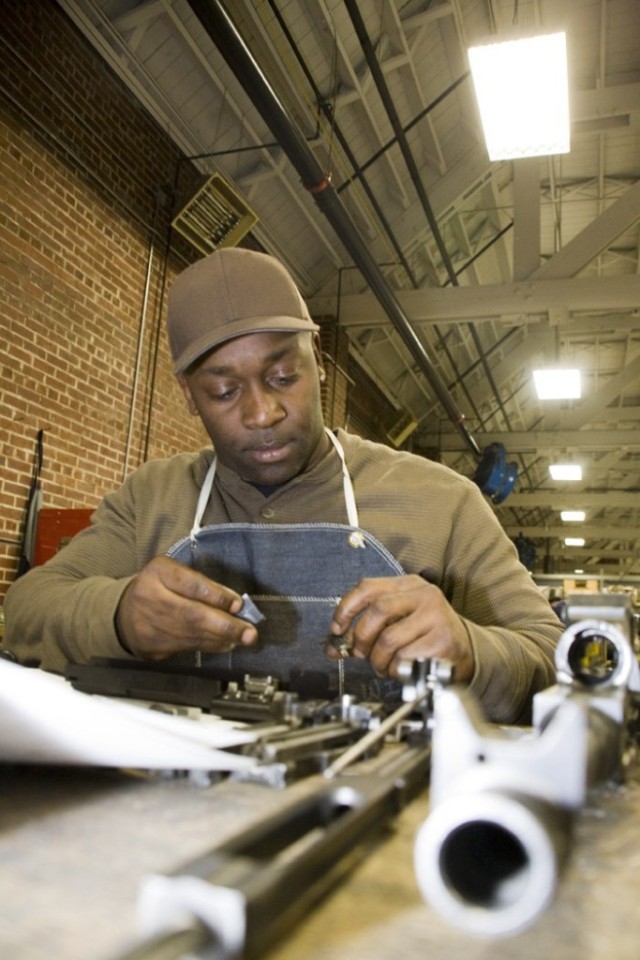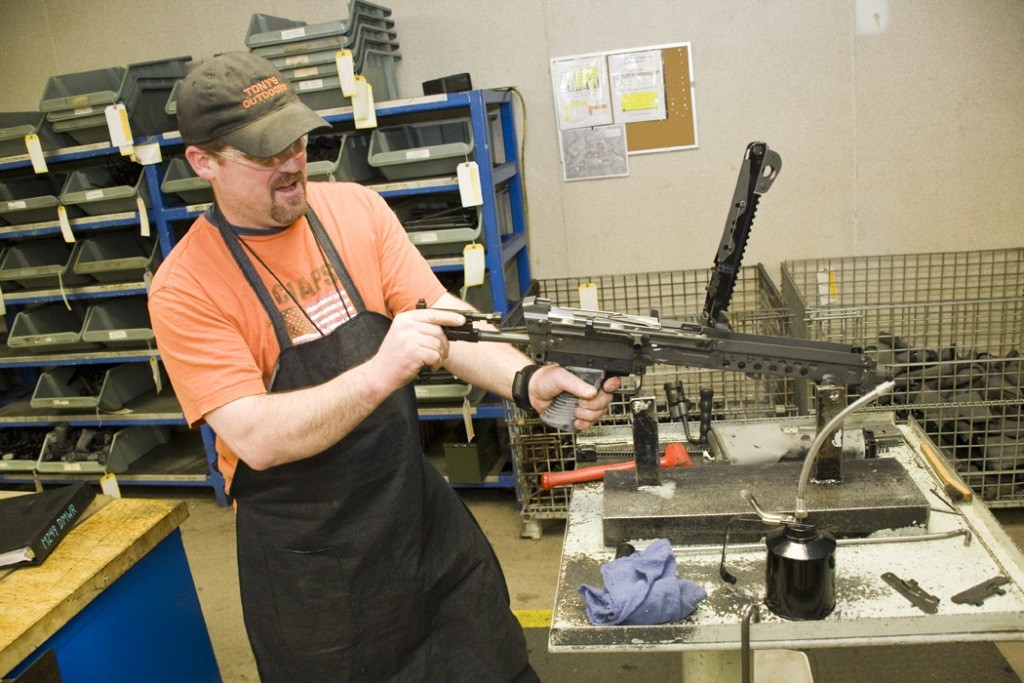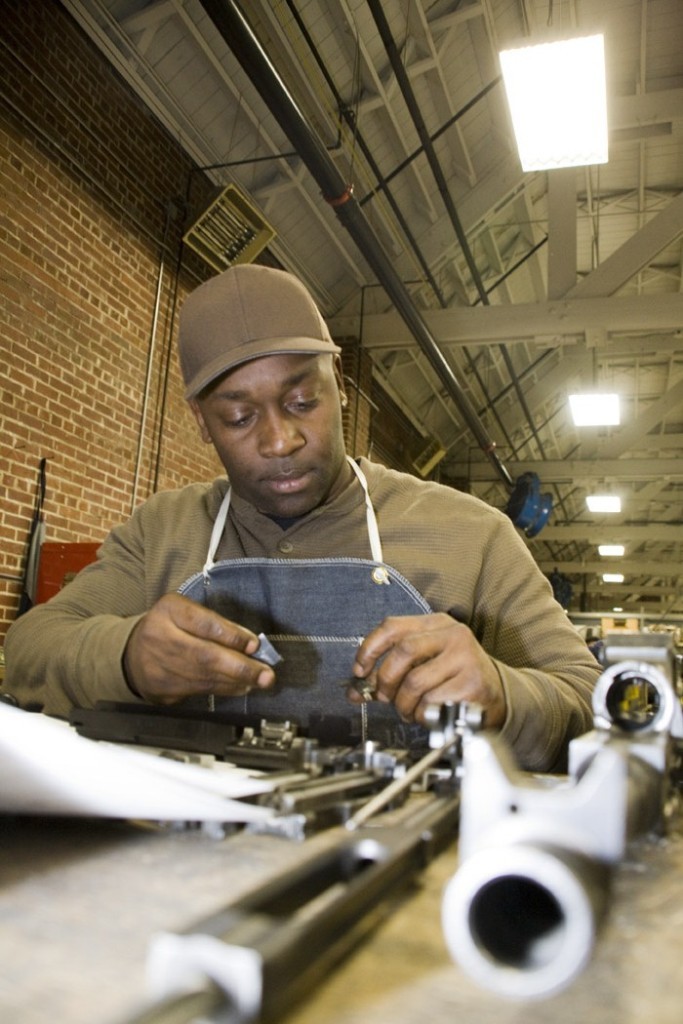ANNISTON ARMY DEPOT, Ala. - A little more than two years ago, following an increase in demand for Anniston Army Depot's Small Arms Readiness Evaluation Teams, SARET split from its long-time home in the Directorate of Production and became part of the Directorate of Mission Plans and Operations. Thanks to continued demand, the group maintains a close working relationship with its DP counterpart.
The SARET mission began in the depot's Small Arms Repair Facility in 2004. With the number of weapons needed for mobilizing units increasing, many units couldn't spare the time to send their guns to Anniston to be reset, so repairers needed to go to them.
"We were SARET before SARET existed," said Jeff Bonner, chief for the Small Arms Repair Facility. "It got to be so big that we couldn't support all the SARET missions and keep our shop going."
When the SARET missions began to overwhelm the facility, SARET moved into its own building, officially separating from small arms in 2007 to become part of DMPO.
SARET does not overhaul or reset weapons. Instead, they inspect and make necessary repairs to every type of small arm ranging from personal rifles to crew-served weapons like M2s, Mark 19s, mortars and M240s.
The group currently has 52 employees and two missions. SARET - Repair is the designation for mobile teams of small arms repairers, but there is also a shop on the depot, under the name SARET - Repair Anniston, where employees repair weapons that come here.
SARET-RA mostly repairs crew-served weapons, receiving shipments from units returning from Southwest Asia for repair while the Soldiers are on leave. That mission often takes precedence over the travel missions, particularly when a large number of weapons are in the shop.
"They were traveling frequently, but now, since we have so many weapons in the shop, they're not going out as often," said Kerry Anderson, supervisor for SARET-RA. "The more weapons we have here, the longer we can keep our people here."
Whenever the need arises for additional teams on the road, workers from the Small Arms Repair Facility often step up to travel.
Bonner keeps a rolling list of small arms repairers who are willing and ready to go wherever and whenever to help the Soldiers.
"Whenever SARET can't meet their mission's capability, we step up," said Bonner. "We help them as much as we can and sometimes it hurts our production ability, but we are always willing to support their mission where we can."
One of those volunteers, Tony Gunter, was on the first SARET mission and has since returned to work in the Small Arms Repair Facility. Over the years, he has gone on at least 40 travel missions and said he is always ready to go again.
"Here, I work on one weapon. There, I work on whatever they have. It's more challenging," he said.
In addition to providing travelers for the SARET teams, the small arms shop completely overhauls every M249 Squat Automatic Weapon, or SAW, that comes onto the depot, whether for SARET-RA or not.
"When the SAWs get to us, they look pretty rough, but when they leave, they look like brand new weapons," said Bonner.
The SARET-R missions are as varied as the weapons the team members repair.
"We serve all units. We go to Italy, Japan, Germany, Hawaii and just about every stateside unit in the United States," said Paul Barber, supervisor for SARET-R.
The teams usually have 30 days notice before a trip, but, occasionally, their advance notice is far less.
"We've had one day's notice before, so we're ready to travel on 24 hours notice," said Barber. "We've got a lot of people who love to travel. They love to go out and see the customer; see the face behind the weapons."
Many of these customers are in Southwest Asia where SARET maintains two repair centers. Every six months, 12 SARET-R team members are rotated into the area where they work on weapons used daily by the warfighters.
"That is a very rewarding place. It is a hands-on, wartime situation," said Barber.
Hubert Stapler, a SARET small arms repairer for three years, recently returned from a tour in Southwest Asia. He enjoys the face-to-face interaction and noted repairers are often able to give the Soldiers a deeper understanding of how their weapon works.
"Working in small arms, you only see the weapon, but with SARET you get to see the Soldier who is going to be using that weapon," he said.




Social Sharing